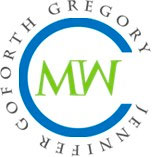How to Find Long-Term Anchor Clients

Yesterday, on my brand new Freelance Content Marketing Writer Facebook group – which has already become an active and supportive community in only two days, so be sure to join if you haven’t already – someone asked about how to find anchor clients. And after five years of answering this question, I finally came up with a reply that made sense.
Clients don’t start out as anchor clients. But your regular clients can become anchor clients.
Very rarely will a client hire you off the bat for an ongoing project. Even when clients want to hire me for 4 blogs posts a month, I suggest we do a few blog posts first to makes sure we are match before both agreeing to ongoing work. Instead, what usually happens is that regular clients turn into anchor clients because you and the client are a great match.
A few years ago, I stopped taking clients with one-off projects because new clients are time consuming. This also means that every new client I take has the potential to turn into an anchor client. The exception to this rule is if a project will give me a clip that I can use to get higher paying work or the project is very high paying.
A lot of writers tell me that they don’t know where to start when looking for anchor clients. And I think that the reason is that its impossible to know for sure if a new client will become an anchor client. So it feels overwhelming when specifically looking for an anchor client. I think the answer is this: look for great clients with the potential of being anchor clients and then know how to turn those great clients into anchor clients. Today we are going to talk about how to find clients with anchor client potential and then next week we will talk about how to turn new clients into anchor clients.
What exactly are anchor clients?
Let’s back up for a minute and talk about what exactly anchor clients are. I define anchor clients as clients who give me ongoing work. For me that happens in one of two ways:
- Clients that have hired me for a set number of posts or pay me a retainer, so I have guaranteed income. For example, each month, I know where $7,000 of my income is coming from and during four months of the year that number jumps to $10,000, because of an annual project I work on.
- Clients that send regular work my way that adds up to at least 10 percent of my income. They don’t guarantee a set amount of work, but instead regularly send work my way.
I personally think that anchor clients are the key to earning a high income as a content marketing writer and have not yet met a high earning freelancer who doesn’t have anchor clients. When you have anchor clients, you have less pitching and marketing, which translates into more billable hours. You also typically eventually earn a higher hourly rate with anchor clients because you become faster, will have less revisions and master the brand voice. Anchor clients will also often let you try a new type of writing, such as whitepapers or case studies, which gives you clips you can use to land more of this type of work. A new client isn’t likely to hire you for something you’ve never done before.
Finding clients with anchor client potential
Although I don’t think that you can land a new client and know with 100 percent certainty that they will become anchor clients, I think that there are things you can (and should do) to increase the odds of a new client turning into an anchor client. In fact, I think that in most cases you should only take clients that have the possibility of turning into anchor clients. One-off projects, unless there is a very specific reason to take it, just aren’t worth the time and money.
The key is, when you look for new clients, you should consciously look for clients that have anchor client potential. Here are three things to look for:
- Look for clients with ongoing projects – If a client emails you about writing an article or blog post, ask about long-term potential. I tell clients up front that I only take clients who are looking for long-term freelancers. And yesterday a member of the Freelance Content Marketing Writer Facebook group shared an idea that I love: Put a sentence on your LinkedIn profile stating that you are looking for long-term partnerships with clients. People often ask me how to tell if a client has ongoing projects and I used to respond with a long list of things to look for, but my answer is now different. Just ask the client. It saves a lot of time and guessing.
- Know your strengths and look for clients who value those strengths – A client is only going to become an anchor client if they think you do a great job. But that means your strengths need to match up with the skills they want. During the initial call, I listen for the words “detail oriented” and if I hear this mentioned then I usually don’t take the client, because as hard as I try this is never going to describe me. On the other hand, if the client mentions that they want a writer to be part of the team, help with content strategy and come up with ideas, then I know that I could very well be the writer they are looking for.
- Find clients with complementary personalities – A few years ago when I lost three anchor clients and was panicking, I made a list of every anchor client I had ever had and tried to find the pattern. I realized pretty quickly that if we lived in the same town that I would be personal friends with every single one of them. With an anchor client, you become part of the client’s team and a good part of this depends on having a personality that mixes well with the other people on the team.
I also think that a huge key to making a high income is letting clients go quickly who don’t have anchor client potential. But I’ll get to that in next week’s blog post.
What benefits have you seen from having anchor clients? How do you increase the odds of a client becoming an anchor client?


Agree completely about anchor clients, Jennifer. I have several, and knowing I can count on that regular income is a huge relief. Another benefit to anchor clients — they’ve become among my biggest cheerleaders, referring me for other jobs, touting my work, forwarding me leads that they think might be of interest, etc.
Like you, I am big on relationships and find that if I concentrate on that, ‘anchor-type relationships’ frequently follow. I like working as part of a team–knowing what challenges a client faces, how they have addressed them in the past, and ‘where the bodies are buried.’ It makes *my* job easier and they no longer have to worry about getting a new writer up to speed every time they start a new project. I’m also able to identify new opportunities and ways to communicate their message more effectively, which clients always appreciate.
That’s great to hear that you’ve had the same experience
I’ve read and participated in discussions about anchor clients, and this is the first time I’ve read a thorough treatment of who they are and how you can get them. Thank you, Jennifer.
I’m glad you found it helpful! I noticed the same thing – people often asking how to get anchor clients, but no direct answer. So after thinking about this issue WAY too much, that’s exactly why I wrote this post.
I agree with your take on personality and think that’s a big one. For me, anchor clients are like making a good friend or meeting someone who will become your significant other. You can’t really go out looking for it. You have to meet people (clients) until you find that chemistry. Then it just happens.